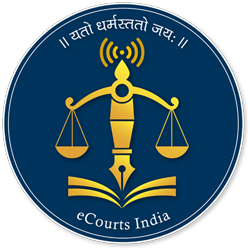Vision & Objectives
THE CORE PRINCIPLES:
- Technology must be harnessed to “Empower” and “Enable.”
-
Technology should not merely be about the automation of conventional practices and processes but must be a vehicle for transformation. A force, which “empowers” and “enables” all citizens.
- Ensuring Access to Justice to all
-
Every individual must be provided with the means to approach a judicial institution for redress and relief unimpeded by any “digital divide” or other socio-economic challenges.
- Creating an efficient and responsive judicial system
-
Use of technology enabling the judicial system not only to provide speedy justice but the evolution of “efficiency metrics” to monitor and map the judiciary’s competencies and effectiveness.
OBJECTIVES:
The e-Committee is guided by these objectives:
- Interlinking of all courts across the country
- ICT enablement of the Indian judicial system
- Enabling courts to enhance judicial productivity, both qualitatively and quantitatively.
- To make the justice delivery system accessible, cost-effective, transparent and accountable.
PHASE II OBJECTIVES:
- Easy dissemination of case information to litigants through various service delivery channels like Kiosks, Web portal, Mobile App, email, SMS Pull, SMS Push
- Planning and scheduling of cases for lawyers
- Case Management for Judicial Officers along with caseload management
- Supervisory and monitoring facilities for Principal and other District Judges and High Court Judges
- State-wide supervision and monitoring of cases in each District and Taluka by the High Courts, Department of Justice, Researchers and Academics
- Formulation of plans for systemic improvement of the justice delivery system


